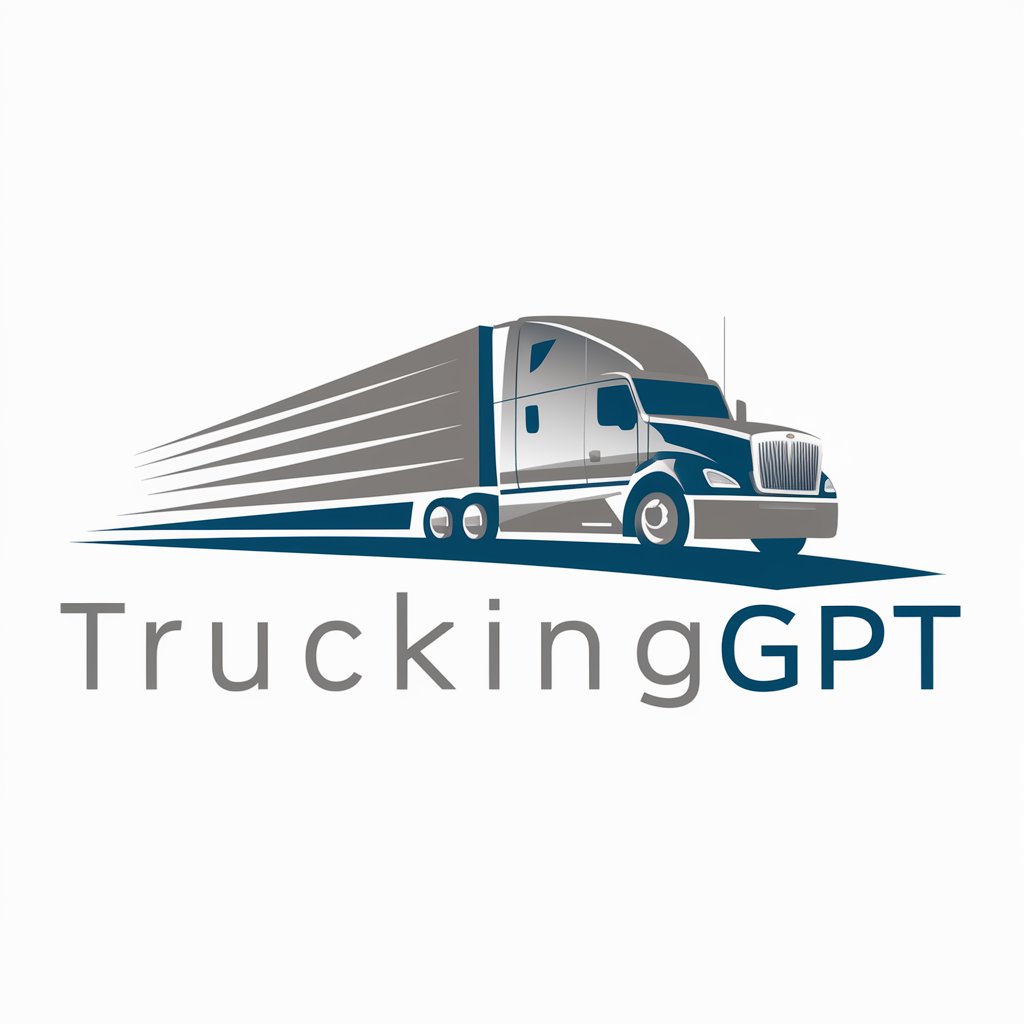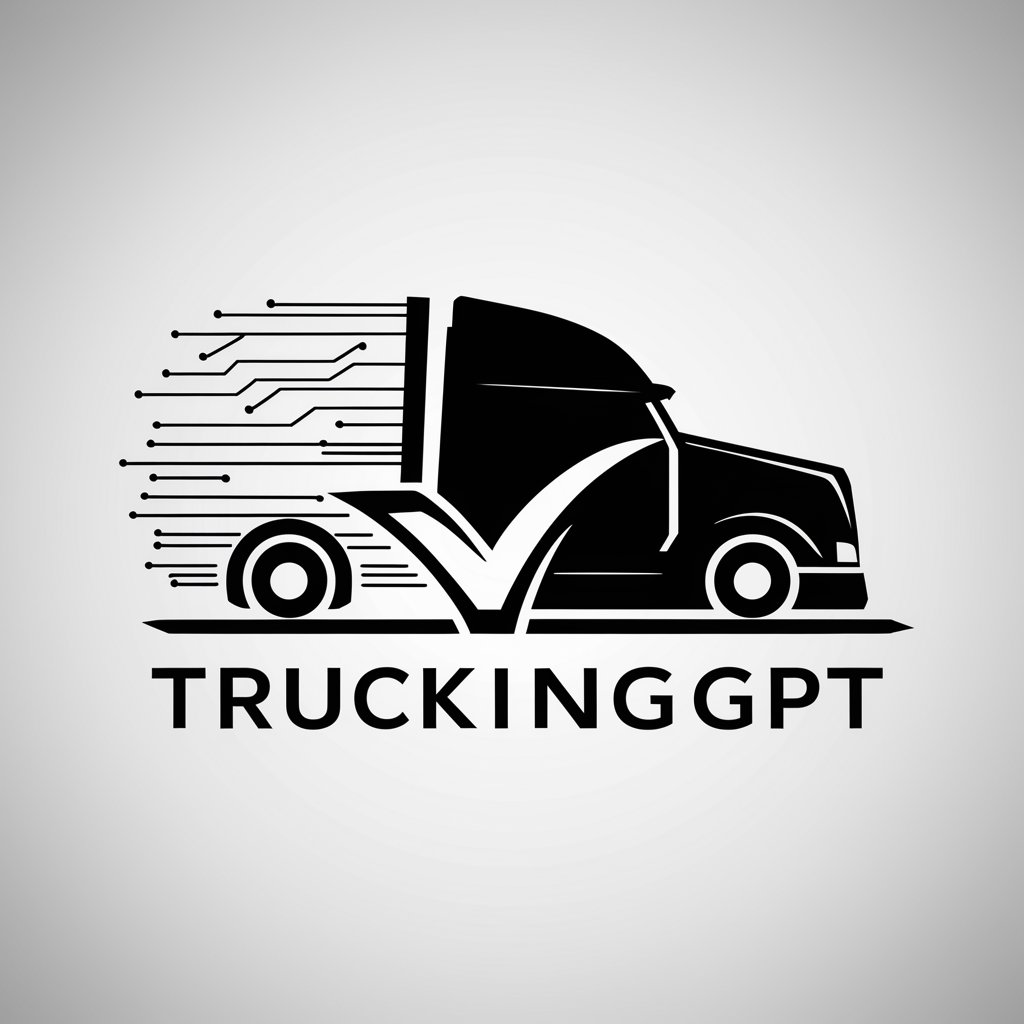
Semi-Trucks - Semi-Truck Expertise
Hello! Need info on semi-trucks or logistics? Ask away!
Empowering freight with AI-driven insights
Tell me about different types of semi-trucks.
What are the latest trends in freight logistics?
How do I maintain a semi-truck?
Explain the regulations for semi-truck drivers.
Get Embed Code
Introduction to Semi-Trucks
Semi-trucks, also known as semi-trailer trucks, tractor-trailers, or 18-wheelers, are heavy-duty vehicles designed primarily for the transportation of cargo. These vehicles consist of two main components: the tractor, which is the front part with the engine and the driver's cab, and the semi-trailer, which is the cargo unit that the tractor pulls. The design purpose of semi-trucks is to transport large volumes of goods over long distances efficiently and safely. For example, a semi-truck might be used to haul perishable goods in a refrigerated trailer from a distribution center to retailers across the country, illustrating its role in facilitating commerce and supporting supply chains. Powered by ChatGPT-4o。

Main Functions of Semi-Trucks
Freight Haulage
Example
Transportation of consumer goods from manufacturing plants to distribution centers.
Scenario
A semi-truck equipped with a dry van trailer carries electronics from a factory in one state to various distribution centers across the region, ensuring timely delivery for retail.
Specialized Transport
Example
Hauling oversized loads or hazardous materials.
Scenario
A semi equipped with a flatbed trailer transports oversized construction equipment to a job site, or a tanker semi carries chemicals, requiring special handling and adherence to safety regulations.
Refrigerated Transport
Example
Shipping perishable goods.
Scenario
A semi-truck with a refrigerated trailer, also known as a reefer, transports fresh produce from farms to supermarkets, maintaining specific temperature conditions to ensure freshness.
Bulk Material Transport
Example
Carrying bulk agricultural products or raw materials.
Scenario
A semi equipped with a bulk trailer carries grain from agricultural areas to processing facilities, or it might transport sand or gravel for construction projects.
Ideal Users of Semi-Trucks Services
Logistics and Transportation Companies
These entities manage the movement of goods across distances and require reliable, efficient vehicles to transport cargo. They benefit from semi-trucks' versatility and capacity, enabling them to fulfill diverse shipping needs for their clients.
Manufacturing and Distribution Entities
Companies that produce goods or manage distribution centers rely on semi-trucks to move products to market. The ability to haul large volumes helps maintain supply chain efficiency and meet consumer demand.
Construction and Heavy Industry
Sectors that involve large-scale projects or the use of heavy equipment utilize semi-trucks for transporting machinery and materials. The rugged design and hauling capacity of semi-trucks make them indispensable for such operations.
Agricultural Producers
Farmers and agricultural enterprises use semi-trucks to transport bulk products like grain, livestock, and produce to processing facilities and markets, benefiting from the ability to move large quantities efficiently.

How to Utilize Semi-Trucks Effectively
Start Your Journey
Begin by exploring semi-truck functionalities with a free trial at yeschat.ai, no login or ChatGPT Plus subscription required.
Understand Your Needs
Identify your specific transportation or freight needs to choose the right semi-truck model and configuration.
Plan Your Route
Utilize route planning tools to ensure efficiency in fuel usage and time, considering factors like weight limits and road restrictions.
Conduct Pre-Trip Inspections
Perform thorough pre-trip inspections to check for mechanical integrity, safety compliance, and load security.
Operate Safely
Adhere to driving regulations, rest periods, and safe driving practices to ensure the well-being of the driver and the safety of the cargo.
Try other advanced and practical GPTs
Brand Directory
Unlocking Brand Insights with AI

Arno's Themenbasierter Newsletter Assistent
Empower Your Voice with AI-Powered Newsletters

DUSTY
Empowering Content Creation with AI

Strategist Prime: Win at the Game of Business!
Empower Your Business with AI-driven Strategy

YoloLiv Support
Empowering Your Streams with AI

프로이트가 해주는 심리상담
Unlocking the unconscious with AI-powered Freudian analysis

Eternity
Empowering creativity and efficiency with AI.

Hardwood
Empowering Wood Projects with AI

Bladder Cancer
Empowering knowledge on bladder cancer with AI

Towing
AI-powered Towing Guidance at Your Fingertips

Engaging Script Creator - CDC Gaming Show
Craft Engaging Gaming Scripts with AI

Conservative
Unveiling Conservative Principles through AI

Frequently Asked Questions about Semi-Trucks
What are the key components of a semi-truck?
Key components include the tractor unit, engine, transmission, cab, and the trailer attachment mechanism, which is crucial for hauling various types of cargo.
How does one choose the right semi-truck for their needs?
Consider factors such as cargo type, weight capacity, distance of haul, and fuel efficiency. It's also important to assess the terrain and typical weather conditions of your routes.
What are the maintenance requirements for a semi-truck?
Regular maintenance includes engine checks, tire rotations, brake inspections, fluid level checks, and ensuring all lights and signals are functioning properly.
Can semi-trucks be used for specialized transportation needs?
Yes, there are specialized semi-trucks designed for specific cargo, such as refrigerated trailers for perishable goods, tankers for liquids, and flatbeds for oversized loads.
What are the legal requirements for operating a semi-truck?
Operators must have a Commercial Driver's License (CDL), adhere to Hours of Service regulations, and comply with weight, length, and height restrictions on roads and bridges.





